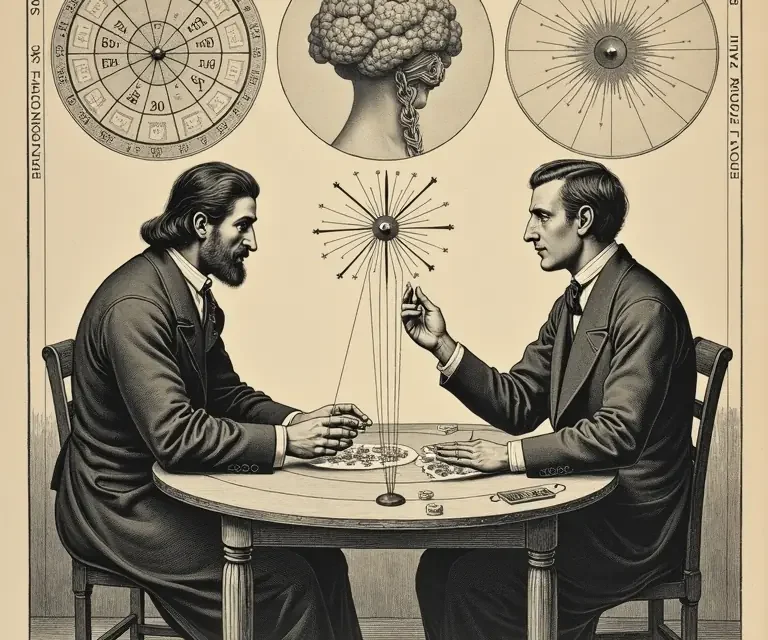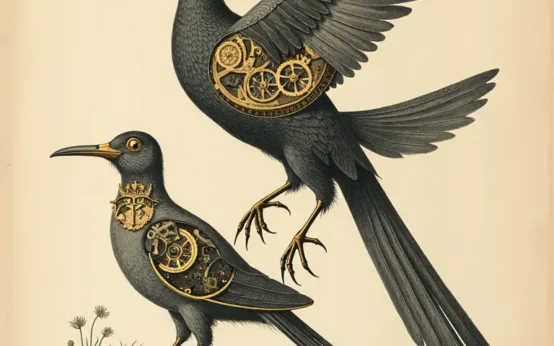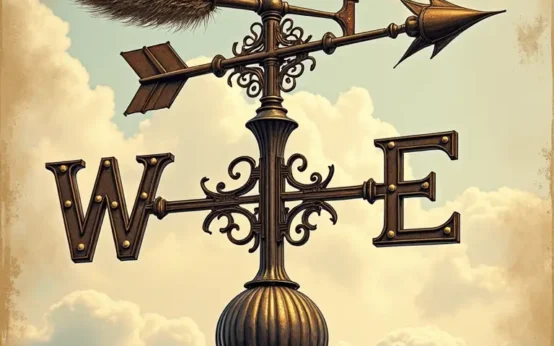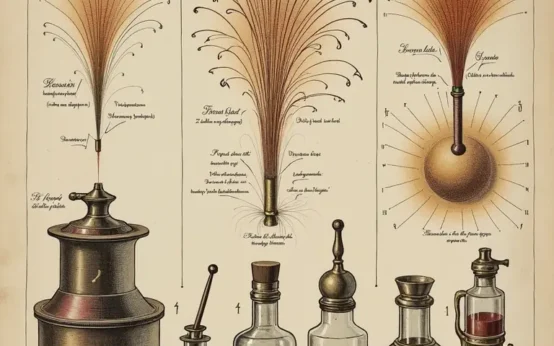For centuries, practices like astrology, tarot, palmistry, and numerology have been dismissed as mere superstition, charming parlor tricks, or even outright fraud. Yet, beneath the veneer of mysticism lies a fascinating history interwoven with genuine attempts to understand the world, employing methods that, while not scientifically valid by today’s standards, were often rooted in astute observation, early statistical thinking, and even pre-scientific understandings of patterns and cycles. This article will delve into the surprisingly scientific roots of these fortune-telling methods, exploring how they emerged from specific historical and intellectual contexts, and examining the seeds of rational thought they contained.
Astrology: From Babylonian Astronomy to Personality Profiling
Perhaps the most ancient and widespread form of divination, astrology’s origins lie in Mesopotamia, specifically with the Babylonians around the 3rd millennium BCE. However, early Babylonian astrology wasn’t about predicting individual futures; it was a sophisticated system of omen interpretation focused on the fate of the *king* and the *nation*. Priests, who doubled as astronomers, meticulously recorded celestial events – planetary positions, eclipses, comets – believing these were divine signals reflecting the will of the gods. This was less about ‘your horoscope’ and more about ‘what does the heavens tell us about the stability of the empire?’
The key here is observation. Babylonian astronomers were incredibly diligent record-keepers. They developed a comprehensive system for tracking the movements of celestial bodies, laying the foundation for later astronomical advancements. Their meticulous records allowed them to identify patterns and cycles, leading to the development of mathematical models to predict future celestial events. While their interpretations were theological, the *method* was fundamentally observational and predictive – hallmarks of scientific inquiry.
The transmission of Babylonian astronomy and astrology to Greece, beginning around the Hellenistic period (3rd century BCE), marked a turning point. Greek philosophers, such as Ptolemy, incorporated Babylonian knowledge into their own cosmological systems. Ptolemy’s Tetrabiblos, a foundational text for Western astrology, attempted to rationalize astrological principles based on Greek philosophy and natural science. He proposed that the planets exerted a physical influence on earthly affairs, an idea that, while incorrect, represented an attempt to explain astrological effects through natural causes. It’s important to note that Ptolemy was also a prominent astronomer, and his astrological work was often intertwined with his astronomical observations.
The development of natal astrology – the creation of birth charts – was another crucial step. This shifted the focus from national fate to individual characteristics and life paths. The association of specific planetary positions at the moment of birth with personality traits and future events can be seen as an early (and flawed) attempt at correlation analysis. While the underlying assumptions are not scientifically sound, the effort to find relationships between astronomical phenomena and human experience is noteworthy.
Tarot: From Card Games to Psychological Archetypes
The origins of the tarot are considerably more obscure than those of astrology. Most historians believe the tarot originated in 15th-century Italy as a card game, similar to bridge or whist. The earliest surviving tarot decks were used for entertainment, and there’s no evidence they were initially associated with divination. However, by the 18th century, tarot cards began to be used for fortune-telling, particularly in France and England.
The rise of occultism in the 19th century, particularly with the Hermetic Order of the Golden Dawn, profoundly influenced the interpretation of tarot. Members of the Golden Dawn, including figures like A.E. Waite and Pamela Colman Smith (who created the iconic Rider-Waite tarot deck), imbued the cards with complex symbolism drawn from Kabbalah, astrology, and alchemy. This system of symbolism, while mystical, also resonates with concepts of archetypes and the collective unconscious explored by Carl Jung.
Jungian psychology offers a fascinating lens through which to view the tarot. Jung believed that archetypes – universal, primordial patterns and images – reside in the collective unconscious, a shared reservoir of human experience. The images and symbols on tarot cards can be seen as representations of these archetypes, triggering unconscious associations and providing a framework for self-reflection. From this perspective, the tarot isn’t necessarily predicting the future, but rather providing a symbolic language for exploring the inner landscape of the psyche. The act of drawing cards and interpreting them can be viewed as a form of projective testing, where individuals project their own thoughts, feelings, and experiences onto the images.
Palmistry: Physiological Observations and Personality Assessment
Palmistry, or chiromancy, is the practice of reading lines and features on the palm to assess personality traits and predict future events. Its roots can be traced back to ancient India and Greece, with early forms focusing on the relationship between hand shape and temperament. Aristotle, for example, wrote about palmistry, although he considered it a less reliable method of divination than astrology.
While the idea that lines on the palm directly dictate destiny is unsubstantiated, the practice likely arose from astute observation of the correlation between physical characteristics and personality traits. For instance, someone with physically strong hands might be perceived as hardworking and practical. The observation of skin texture, finger length, and the prominence of certain lines could have been associated with observed behavioral patterns. This isn’t to say palmistry is accurate, but that it originated, in part, from a desire to understand human behavior through observable physical cues.
Furthermore, the field of nature’s patterns demonstrates that even seemingly random formations can reveal underlying structural information. While palm lines are not deliberately ‘designed’ like a spiderweb, the early palmists may have intuitively sensed that the arrangement of lines held some information about the individual’s physiological state or development – much like observing growth rings on a tree.
Numerology: Mathematical Patterns and Symbolic Meaning
Numerology assigns numerical values to letters in a name or date of birth and then calculates sums and patterns to reveal insights into personality, life path, and future events. Its origins can be found in ancient Greece and Babylon, with Pythagoras being a prominent figure associated with its development. Pythagoras believed that numbers were the fundamental building blocks of reality and that everything could be expressed in numerical terms.
Pythagorean numerology wasn’t simply about arbitrary assignment of numbers to letters. It stemmed from a belief in the inherent mathematical order of the universe. The idea that numbers possessed specific qualities and vibrations was central to his philosophy. While the connection between numbers and human characteristics is not scientifically proven, the Pythagorean approach reflects a fascination with mathematical patterns and their perceived influence on the world.
The emphasis on reducing complex information to single digits can be seen as a precursor to modern statistical methods of data reduction and simplification. While numerological interpretations are subjective, the act of assigning numerical values and performing calculations demonstrates an attempt to impose order and structure on seemingly chaotic information. Consider also the deliberate symbolism in coin design – a similar attempt to imbue objects with meaning through numerical and symbolic representations.
Runes: Ancient Alphabets and Divination
The runic alphabet, used by Germanic peoples from around the 3rd century CE, wasn’t initially intended for divination. Runes were primarily used for practical purposes – inscriptions on tools, weapons, and monuments. However, by the Viking Age, runes began to be associated with magic and divination. The association likely arose from the runes’ inherent mystery and their connection to ancient traditions.
The practice of rune casting involved drawing runes at random from a bag or scattering them on a surface and interpreting their arrangement. The interpretation of runes was often based on their individual meanings, derived from their historical context and associated myths. The act of drawing runes randomly can be seen as a form of chance operation, similar to the use of dice or other randomizing devices in ancient divination practices.
The runes themselves were more than just letters; they were imbued with cultural significance and were considered powerful symbols. The act of working with runes, even in a divinatory context, could be seen as a way of connecting with ancestral traditions and tapping into a shared cultural heritage. This connection to cultural memory is a powerful element often overlooked in discussions of divination.
The Role of Confirmation Bias and Pattern Recognition
While exploring the scientific roots of these practices, it’s crucial to acknowledge the psychological factors that contribute to their enduring appeal. Confirmation bias – the tendency to seek out information that confirms pre-existing beliefs – plays a significant role. If someone believes in astrology, they are more likely to notice events that seem to align with their horoscope and dismiss those that don’t.
Humans are also naturally inclined to seek patterns, even in random data. This tendency, known as apophenia, can lead us to perceive meaningful connections where none exist. The ambiguity inherent in many fortune-telling methods allows for multiple interpretations, increasing the likelihood that individuals will find a connection to their own lives. This isn’t necessarily evidence of fraud or deception; it’s a reflection of how our brains are wired to make sense of the world.
The Legacy of Ancient Knowledge
The history of fortune-telling methods is a testament to the human desire to understand ourselves and our place in the universe. While these practices are not scientifically valid in the modern sense, they emerged from genuine attempts to observe, analyze, and interpret the world around us. They reveal a fascinating interplay between observation, superstition, and the development of early forms of rational thought.
Furthermore, the enduring appeal of these methods speaks to our fundamental need for meaning and purpose. In a complex and often unpredictable world, fortune-telling can provide a sense of control, comfort, and guidance. It’s a reminder that even seemingly irrational beliefs can have deep roots in human history and psychology.
Consider the ancient Roman use of concrete, a material that allowed for architectural feats previously unimaginable. The knowledge and experimentation involved in creating durable concrete, while not directly related to divination, demonstrate a similar spirit of innovation and observation. The story of Roman concrete highlights the importance of understanding the materials and forces shaping our world – a drive that also fueled early astrological observations.
Similarly, the history of chopsticks illustrates how seemingly simple tools can reveal complex cultural values and engineering principles. These examples demonstrate that even everyday objects and practices can be imbued with layers of meaning and history, much like the symbols and rituals associated with fortune-telling methods.
And looking at the evolution of paper money, we see how a system initially based on trust and representation eventually evolved into complex financial instruments. The underlying principle of representation – assigning value to symbols – is also present in many fortune-telling systems, where symbols are used to represent abstract concepts and future possibilities.


 The Curious Mechanics of Automaton Birds: A History of Feathered Clockwork
The Curious Mechanics of Automaton Birds: A History of Feathered Clockwork  The Curious Mechanics of Celestial Globes: Mapping the Heavens in Miniature
The Curious Mechanics of Celestial Globes: Mapping the Heavens in Miniature  The Surprisingly Consistent Science of Historical Weather Vanes – Art, Meteorology & Directional Lore
The Surprisingly Consistent Science of Historical Weather Vanes – Art, Meteorology & Directional Lore  The Unexpectedly Consistent Science of Early Firework Composition: Alchemy, Aesthetics & Aerial Displays
The Unexpectedly Consistent Science of Early Firework Composition: Alchemy, Aesthetics & Aerial Displays  The Surprisingly Consistent Logic of Traditional Herbal Remedies: Beyond Folklore, a History of Observation
The Surprisingly Consistent Logic of Traditional Herbal Remedies: Beyond Folklore, a History of Observation  The Surprisingly Consistent Science of Early Map Projections: Distorting the World to Understand It
The Surprisingly Consistent Science of Early Map Projections: Distorting the World to Understand It